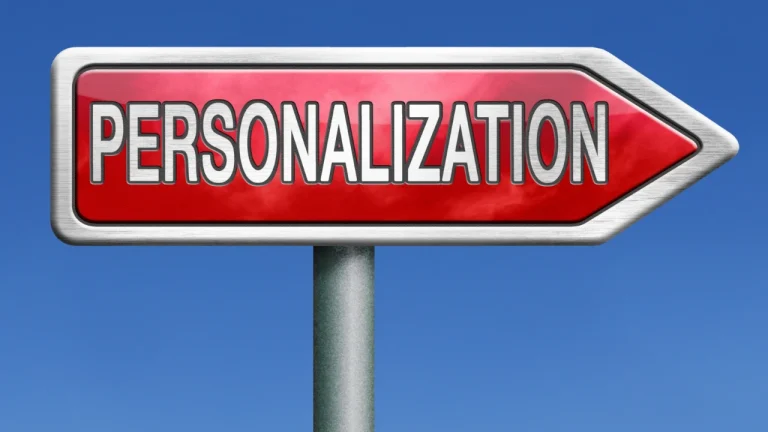As we look ahead to 2025, the eCommerce landscape continues to evolve rapidly, driven by new technologies, shifting consumer behaviors, and the increasing demand for seamless online experiences. For businesses looking to stay competitive, understanding the trends shaping the future of eCommerce is crucial. Here are the top 10 eCommerce trends you need to watch for in 2025.
1. Hyper-Personalization at Scale

In 2025, personalization will go beyond simple product recommendations. With advancements in AI and data analytics, hyper-personalization will allow online retailers to tailor the entire shopping experience to individual customer preferences. From personalized marketing campaigns to customized product displays and checkout processes, businesses will leverage real-time data to create more relevant, engaging shopping journeys. Full-service Amazon agency can play a key role in implementing these strategies, ensuring that sellers optimize their presence and adapt seamlessly to these evolving personalization trends.
According to a report by Epsilon, 80% of consumers are more likely to make a purchase when brands offer personalized experiences
2. Voice Commerce Takes Center Stage

Voice assistants like Amazon’s Alexa and Google Assistant have already made their mark, but in 2025, voice commerce will see significant growth. Consumers will increasingly use voice commands to search for products, place orders, and even complete payments. Businesses will need to optimize their online stores for voice search and ensure their products are easily accessible through voice-enabled devices.
3. Augmented Reality (AR) Enhancing the Shopping Experience

Augmented reality will continue to reshape the eCommerce experience in 2025, allowing customers to visualize products in their real-world environments before making a purchase. AR tools will become standard for industries like fashion, home décor, and beauty, enabling customers to “try on” clothes, “place” furniture in their homes, or see how makeup shades will look on their skin, reducing return rates and enhancing customer confidence.
4. Sustainability as a Core Business Strategy

Consumers are increasingly eco-conscious, and in 2025, sustainability will be a core component of eCommerce strategies. Shoppers will prioritize businesses that implement sustainable practices such as eco-friendly packaging, carbon-neutral shipping, and transparent supply chains. Brands that demonstrate genuine commitment to environmental and social responsibility will gain a competitive edge. A report from IBM found that nearly 60% of consilling to pay a premium for sustainable brands .
5. The Rise of Social Commerce

Social media platforms will become even more integrated with eCommerce in 2025. Platforms like Instagram, TikTok, and Facebook will enhance their shopping features, allowing users to browse, purchase, and review products directly within the app. Influencer-driven campaigns and user-generated content will drive sales, blurring the lines between social engagement and online shopping. According to Accenture, Social commerce is projected to grow three times as fast as traditional eCommerce, reaching $1.2 trillion by 2025.
6. Artificial Intelligence for Smarter Operations

AI will play a critical role in optimizing eCommerce operations in 2025. From chatbots providing instant customer support to AI-powered returns and inventory management systems that predict demand, AI will help businesses run more efficiently. Machine learning algorithms will also continue to refine product recommendations, improving customer satisfaction and increasing conversion rates. The AI in eCommerce market is projected to grow at a 29% CAGR, reaching $9 billion by 2025.
7. Faster, More Flexible Delivery Options

With the rise of instant gratification, fast and flexible delivery will be a key eCommerce trend in 2025. Consumers will expect same-day or next-day delivery as standard, and businesses will need to expand fulfillment options to meet these demands. Hyperlocal delivery, drone shipping, and autonomous delivery vehicles are likely to become more widespread, providing customers with faster and more convenient ways to receive their orders.
8. The Growth of Subscription-Based Models

Subscription eCommerce will continue to rise in popularity, especially in industries like beauty, fashion, food, and entertainment. Subscription models allow businesses to build long-term relationships with customers, providing them with recurring revenue streams. By 2025, we can expect to see more companies offering personalized subscription boxes and membership programs that cater to customer preferences.
9. Cryptocurrency and Digital Payments

According to Statista, 48% of customers are open to using cryptocurrency in online purchases, with digital wallet usage projected to reach 4.4 billion users by 2025.
As digital payments evolve, cryptocurrency will become a more mainstream payment option in 2025. More eCommerce businesses will begin accepting Bitcoin, Ethereum, and other cryptocurrencies, providing consumers with more payment flexibility. Additionally, digital wallets and buy-now-pay-later (BNPL) services will see continued growth, making the checkout process more seamless and inclusive.
10. AI-Powered Fraud Prevention

With the rise of online transactions comes the increased risk of cyberattacks and fraud. In 2025, AI-powered fraud prevention systems will be essential for eCommerce businesses to protect customer data and maintain trust. Fradulent returns are also very prevalent in eCommerce. These systems will use machine learning to detect unusual transaction/returns patterns and stop fraudulent activities before they happen, ensuring a safer online shopping experience.
Conclusion
As we move into 2025, these eCommerce trends will shape the future of online shopping. Businesses that embrace hyper-personalization, leverage AI and AR, prioritize sustainability, and adopt new technologies will thrive in this evolving digital landscape. Staying ahead of these trends will not only enhance customer experience but also boost operational efficiency and drive long-term success in the competitive world of eCommerce.


